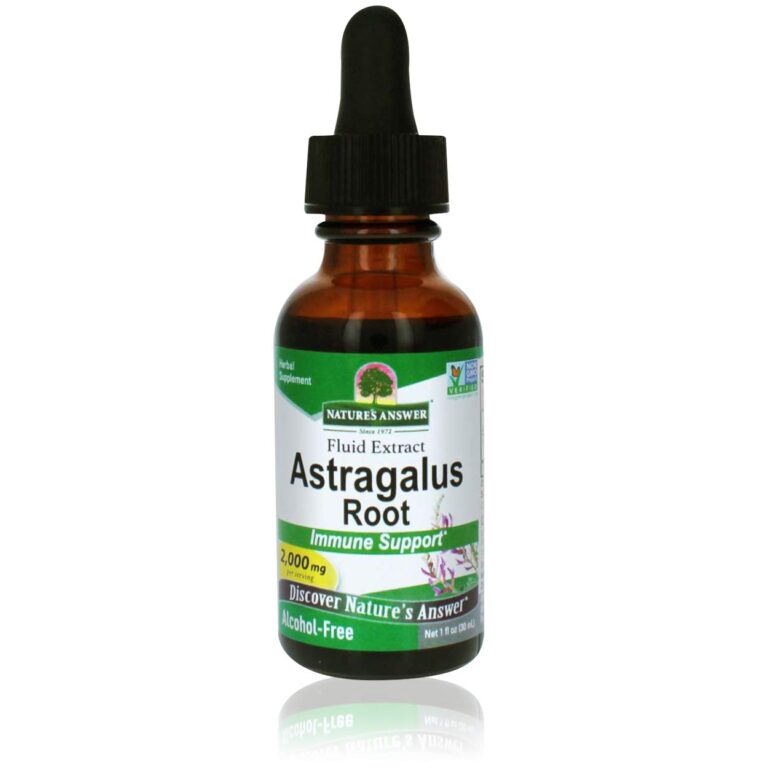A dog can live with fluid in the abdomen for varying lengths of time, depending on the underlying cause and how the condition is managed. In some cases, if the underlying condition is successfully treated, the fluid may resolve and the dog can live a normal lifespan.
However, if the underlying condition is not treated or cannot be treated, the fluid may continue to accumulate and cause discomfort, pain, and difficulty breathing, potentially leading to a shortened lifespan. Additional factors, such as the overall health and age of the dog, can also influence their life expectancy with fluid in the abdomen.

Credit: www.amazon.com
Understanding Ascites In Dogs
Ascites in dogs refers to the accumulation of fluid in the abdomen, which can cause discomfort, pain, and difficulty breathing. The length of time a dog can live with fluid in their abdomen depends on the underlying condition and whether it is successfully treated.
While some cases of ascites can be managed or even cured, unfortunately, some conditions may be untreatable.
What Is Ascites?
Ascites, also known as abdominal effusion or free abdominal fluid, is a serious medical condition in which fluid accumulates in the abdominal cavity of dogs. This condition can be life-threatening if left untreated. Ascites can result from various underlying health issues and may require immediate veterinary attention.
Causes Of Ascites
Ascites in dogs can occur due to several reasons, including liver disease, heart failure, kidney disease, cancer, and infections. In liver disease, such as cirrhosis, the liver becomes compromised and cannot perform its functions properly, leading to fluid buildup in the abdomen. Similarly, heart failure causes fluid to leak into the abdomen due to increased pressure in the blood vessels. It’s essential to identify the cause of ascites to determine the appropriate treatment.
Symptoms Of Ascites
- Bloated abdomen
- Weight gain or distended belly
- Difficulty breathing or rapid breathing
- Lack of appetite
- Weakness or lethargy
- Discomfort or pain
- Decreased activity level
If your dog exhibits any of these symptoms, it’s crucial to consult a veterinarian for a proper diagnosis and treatment plan. Ascites can be indicative of potentially serious underlying health issues, and early detection is vital for improving the prognosis.
Understanding ascites in dogs is essential for pet owners to recognize the signs and seek prompt veterinary care. By knowing what ascites is, its causes, and the common symptoms associated with this condition, you can provide the best care for your furry friend and improve their quality of life.
References:
Fluid in the Abdomen Fact Sheet – Davies Veterinary Specialists. Available at: vetspecialists.co.uk
Ascites in Dogs – Symptoms, Causes, Diagnosis, Treatment – WagWalking. Available at: wagwalking.com
Ascites in Dogs – PetMD. Available at: petmd.com
Managing Ascites In Dogs
Ascites in dogs is a condition where fluid accumulates in the abdomen, causing discomfort and difficulty breathing. Treatment options include surgery or medication, depending on the underlying cause. While some cases of ascites can be managed or cured, others may be untreatable.
Treatment Options
There are several treatment options available for managing ascites in dogs. The appropriate treatment will depend on the underlying cause of the fluid accumulation. Some common treatment options include: 1. Diuretics: Diuretics are commonly prescribed medications that help to increase urine production and remove excess fluid from the body. These medications may be used to manage ascites in dogs, but their effectiveness will vary depending on the cause of the fluid accumulation. 2. Dietary changes: In some cases, dietary modifications may be recommended to help manage ascites. This can include reducing sodium intake, as excessive sodium can contribute to fluid retention. Your veterinarian may provide specific dietary recommendations to help manage your dog’s condition. 3. Abdominocentesis: Abdominocentesis is a procedure where a needle is used to remove fluid from the abdomen. This can provide temporary relief for dogs with severe ascites, but it is important to address the underlying cause of the fluid accumulation to prevent it from recurring. 4. Surgery: In certain cases, surgical intervention may be necessary to address the underlying cause of ascites. For example, if a tumor or organ dysfunction is contributing to the fluid accumulation, surgery may be required to remove the tumor or treat the underlying condition.Prognosis And Life Expectancy
The prognosis for dogs with ascites can vary depending on the underlying cause and the response to treatment. In some cases, successfully managing the underlying condition can lead to a positive prognosis and an improved quality of life for the dog. However, it is important to note that ascites can be a symptom of serious underlying diseases, such as liver or heart disease, which may have a poorer prognosis. It is crucial to work closely with your veterinarian to determine the best course of treatment for your dog and to discuss their specific prognosis.Preventing Ascites
While not all cases of ascites can be prevented, there are steps dog owners can take to reduce the risk of fluid accumulation in the abdomen: 1. Maintain a healthy lifestyle: Providing your dog with a balanced diet, regular exercise, and routine veterinary care can help promote overall health and reduce the risk of developing underlying conditions that can lead to ascites. 2. Monitor for signs of underlying conditions: Paying attention to any changes in your dog’s behavior or symptoms can help detect underlying conditions early on. Prompt veterinary attention and treatment can potentially prevent the development of ascites. 3. Follow your veterinarian’s recommendations: If your dog has a specific health condition that puts them at risk for ascites, it is important to follow your veterinarian’s recommendations for monitoring and managing the condition. This may include regular check-ups, diagnostic testing, and medication administration. By taking proactive measures and working closely with your veterinarian, you can help reduce the risk of ascites in your dog and ensure their overall well-being.Improving Quality Of Life
Dogs with fluid accumulation in the abdomen, also known as ascites, often experience discomfort, pain, and difficulty breathing. As a dog owner, it is important to focus on improving their quality of life by implementing strategies that can alleviate their suffering and support their overall well-being. Here are some key areas to consider when it comes to enhancing your dog’s quality of life in the presence of fluid in the abdomen.
Pain Management
Pain management plays a crucial role in improving the quality of life for dogs with fluid in the abdomen. By effectively managing their pain, you can minimize discomfort and enhance their overall well-being. Consult with your veterinarian to develop a pain management plan tailored to your dog’s specific needs. This may involve the use of pain medications, alternative therapies, such as acupuncture or physical therapy, or a combination of approaches to provide optimal pain relief.
Providing Comfort
Providing a comfortable environment for your dog is essential in improving their quality of life. Create a cozy and relaxing space where they can rest and feel at ease. Consider using soft bedding to alleviate pressure on their abdomen, ensuring they have easy access to food, water, and elimination areas. Regular grooming and hygiene care can also contribute to their comfort by preventing skin irritations and infections. Remember to monitor their behavior and make necessary adjustments to their environment as their condition progresses.
Supporting Organ Function
Supporting organ function is crucial in managing fluid accumulation in the abdomen. Implementing a specialized diet, recommended by your veterinarian, can help support organ health and function. Ensure your dog receives proper nutrition and hydration by offering easily digestible meals and fresh water. Regular exercise, as permitted by their condition, can help promote blood circulation and overall organ health. Additionally, monitoring their weight and body condition can aid in managing fluid retention and preventing further complications.

Credit: toegrips.com

Credit: www.petco.com
Frequently Asked Questions On How Long Can A Dog Live With Fluid In Abdomen
How Long Can A Dog Live With Untreated Ascites?
Untreated ascites in dogs can lead to discomfort, pain, and difficulty breathing. The survival time can vary depending on the underlying condition. Some cases may be managed with medication, while others may require surgery. However, if the underlying condition is not successfully treated, ascites is likely to return.
Can Ascites Go Away In Dogs?
Ascites in dogs may be managed with surgery or medication, depending on the underlying cause. While some cases are manageable or curable, others may not be treatable. It is important to address the underlying condition to prevent the recurrence of ascites.
Are Dogs With Ascites In Pain?
Dogs with ascites may experience discomfort, pain, and difficulty breathing due to the fluid buildup in their abdomen. The underlying condition causing ascites should be treated to alleviate these symptoms. Ascites can be managed with medication or surgery, depending on the case.
However, if the underlying condition is not successfully treated, ascites may recur.
How Do They Remove Fluid From A Dog’s Abdomen?
To remove fluid from a dog’s abdomen, veterinarians can perform a procedure called abdominocentesis. This is a temporary solution, as the fluid may accumulate again if the underlying cause of the ascites is not treated. In some cases, surgery or medication may be necessary.
Ascites can cause discomfort, pain, and difficulty breathing for dogs.
Conclusion
The prognosis for a dog with fluid in the abdomen, also known as ascites, can vary depending on the underlying cause. While some conditions causing ascites can be managed or even cured, there are unfortunately cases where the condition may not be treatable.
Treatment methods such as medication or surgery may be used to manage ascites, but it’s important to address the underlying cause for a more successful outcome. If left untreated, ascites can cause discomfort, pain, difficulty breathing, and potentially be life-threatening.
Therefore, it’s crucial to consult with a veterinarian to determine the best course of action for your dog’s specific situation.



